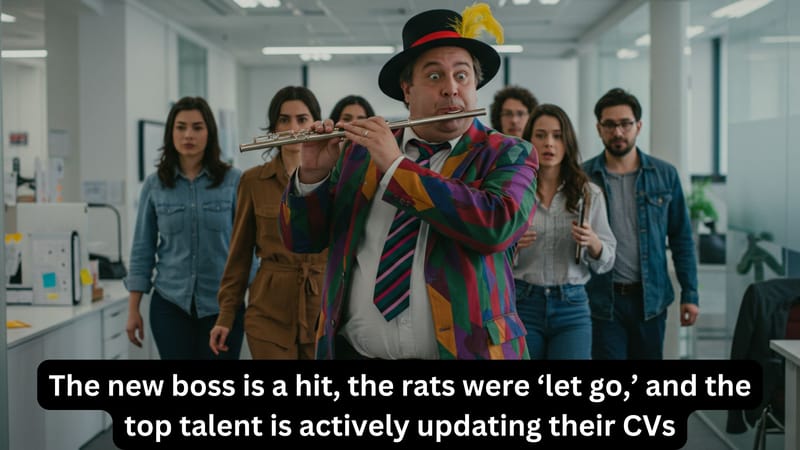7 Reasons Why Employees Are Using Productivity Theatre To Have An Easy Ride
"In the workplace, beat productivity theatre with clear expectations, a positive vibe, and a focus on results. Prioritize learning, flexibility, and trust. Engage, communicate openly, and lead by example for a drama-free work environment."
In the world of modern workplaces, there's a new phenomenon on the rise - "Productivity Theatre." This intriguing term describes the art of appearing busy while accomplishing very little, and it's become a common strategy among employees in various industries.
But why do employees resort to this illusion of productivity? Here are seven compelling reasons that shed light on the motivations behind the scenes:
1) "Busy" is the Buzzword:
In some organizations, the hustle and bustle are highly prized. This is especially true in customer service and service desk roles where time is closely monitored. However, when employees feel the pressure to conform to the culture of busyness, they may resort to visible but ultimately unproductive tasks just to fit in.
2) The Lack of Clear Direction and Goals:
When employees are presented with vague goals and metrics, they often opt for the path of least resistance. Attending meetings without contributing meaningful input becomes a convenient way to pass the time. If no one is monitoring their efforts and ambitions are lacking, they might choose a comfortable, stress-free work routine as long as they collect their paycheck.
3) The Tyranny of Micromanagement:
Constant surveillance and intrusive micromanagement practices can lead employees to over-report their activities. This constant scrutiny may push them to discover creative ways to use productivity theatre to their advantage.
4) The Dreaded Performance Appraisals:
Biannual performance reviews can be disheartening, especially if you're perceived as a mediocre performer. Employees might exaggerate their achievements or use diversion tactics to appear productive when, in reality, they aren't.
5) The Motivation Deficit:
Employees disengaged from their actual jobs might embrace productivity theatre to free up time for personal pursuits. Whether it's surfing the internet, reading, pursuing a side business, or binge-watching Netflix during work-from-home days, they might master the art of productivity theatre and convince everyone of their busyness.
6) Salary Aspirations:
Sometimes, it all boils down to salary expectations. Employees who believe they deserve more may master productivity theatre while they search for better-paying opportunities. Some may even adopt a "work for what you think you're worth" mentality.
7) Toxic Work Environments:
In workplaces tainted by a toxic culture, even well-intentioned employees can turn to productivity theatre. Being passed over for promotions or enduring workplace bullying can contribute to this behaviour. When support is scarce and the organization favours a select few, many employees find solace in productivity theatre.

10 Examples Of Where Employees Could Be Using Productivity Theatre
- Email Overindulgence: Devoting excessive time to sorting, organizing, and responding to emails, regardless of their urgency or relevance.
- Marathon Meetings: Scheduling and attending unnecessarily lengthy meetings that could have been efficiently summarized in a concise email or handled with brevity.
- Note-Taking Overload: Copious note-taking during meetings or conversations without any subsequent action or sharing of the gathered information.
- Desk Dance Routine: Continuously rearranging one's workspace to give the illusion of productivity while evading substantive tasks.
- Endless Research Odyssey: Excessive time spent on researching and reading articles or reports unrelated to current projects or tasks.
- Multitasking Mayhem: Attempting to juggle multiple tasks simultaneously but failing to effectively complete any of them.
- Report Complexity Show: Crafting intricate reports or documentation that offer little value but initially appear impressive.
- Social Media Shenanigans: Posting and engaging on social media during work hours, masquerading as professional networking or research.
- Project Inflation Act: Expanding on projects or tasks to make them seem more intricate and time-consuming than they truly are.
- Busywork Fabrication: Inventing or exaggerating tasks to create an illusion of constant activity, even when core responsibilities are lacking.
12 Ways Employers Can Prevent Productivity Theatre In The Workplace?
A proactive approach is needed to stop and prevent employees from going down this path. Here are several strategies organisations could adopt when trying to tackle this problem.
1. Set Clear Expectations:
- Ensure employees understand their roles and responsibilities.
- Establish clear and achievable goals.
2. Foster a Positive Environment:
- Create a friendly and inclusive workplace culture.
- Address toxic behaviours promptly.
3. Promote Results-Oriented Focus:
- Prioritize completing tasks effectively over appearing busy.
- Recognize and reward based on actual contributions.
4. Encourage Learning and Development:
- Invest in training to improve skills.
- Support ongoing learning and growth.
5. Provide Feedback and Evaluation:
- Regularly provide feedback and acknowledge good work.
- Identify and address obstacles to productivity.
6. Offer Flexible Work Options:
- Consider flexible hours or remote work when suitable.
- Trust employees to manage their time efficiently.
7. Reduce Micromanagement:
- Minimize constant oversight.
- Allow employees autonomy in their work.
8. Ensure Realistic Workloads:
- Avoid overloading employees with excessive tasks.
- Ensure tasks can be completed within regular working hours.
9. Engage and Motivate:
- Involve employees in decision-making processes.
- Recognize and provide opportunities for career growth.
10. Monitor Performance:
- Use data and metrics to assess productivity.
- Watch for unusual patterns or signs of productivity theatre.
11. Address Underlying Issues:
- Investigate and resolve any underlying problems affecting morale.
- Encourage open communication to express concerns.
12. Lead by Example:
- Demonstrate effective work habits.
- Emphasize valuing results over mere appearances.
Addressing productivity theatre is an ongoing process that requires a combination of leadership, cultural, and structural changes within an organization.
By implementing these strategies, employers can create an environment where employees are motivated to work efficiently and productively without the need for theatrical displays of busyness.









